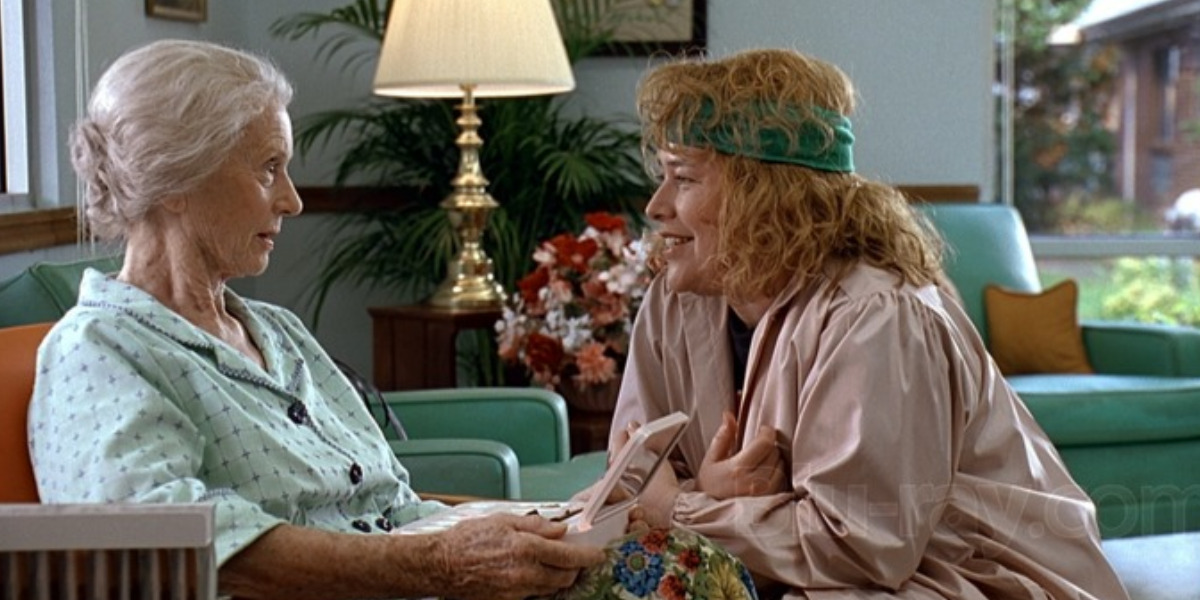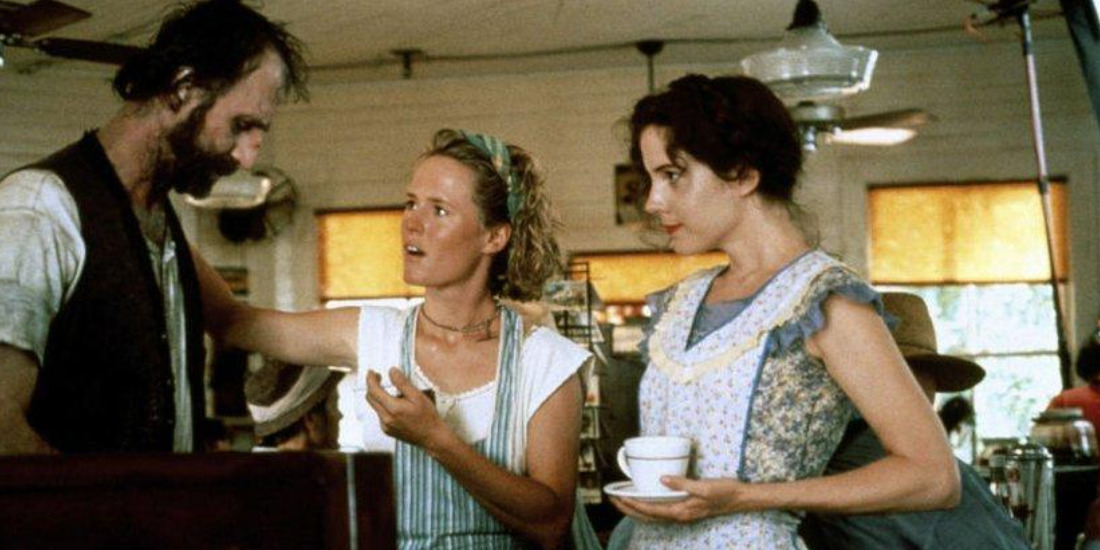‘Fried Green Tomatoes’ is a film about an unlikely friendship born in a nursing home over a shared story about two free-spirited women and their lifelong bond. Evelyn Couch has been unhappy in her marriage for quite some time. Yet, it isn’t until a chance encounter with the talkative old lady, Ninny Threadgoode, that the woman realizes she must take charge of her identity to find happiness. Thus, Evelyn visits her new friend each week to hear stories about Idgie Threadgoode and her headstrong resolve. Idgie ran a successful business, The Whistle Stop Cafe, with her closest friend, Ruth, only to be suspected of the death of the latter’s husband. As Evelyn learns more about these two women and the life built together, she starts improving her own situation.
The film expertly crafts realistic narratives about realistic characters, balancing between riveting plot points and slice-of-life narratives. As a result, with storylines innately authentic to the human conditions, specifically within female experiences, the film compels viewers to wonder if the characters and their storylines hold any connections to reality.
The Book and Real-Life Inspirations Behind Fried Green Tomatoes
‘Fried Green Tomatoes’ is not based on a true story. Instead, it finds its origins in Fannie Flagg’s debut 1987 novel, ‘Fried Green Tomatoes at the Whistle Stop Cafe.’ The story follows a dual timeline between the 1980s, which unfolds Ninny and Evelyn’s narrative, and the 1920s when Idgie and Ruth run their small-town cafe. In that regard, the novel offers a historical fiction perspective by diving back more than half a century from its then-contemporary time period. Nevertheless, its small-town narrative about women finding their life’s purpose and happiness through female relationships and solidarity remains firmly cemented in fictionality.

Therefore, since Jon Avnet’s 1991 film holds its basis in characters and storylines that are fictional in nature, the film itself remains confined to the same. Still, the world Flagg creates in her work remains rooted in reality in more ways than one. Over the years, the author has discussed the real-life inspirations that led her to create the Whistle Stop world. As a kid, Flagg used to visit a railroad cafe in Irondale run by Bess Fortenberry, her grandmother’s young sister.
The compelling environment inside Fortenberry’s cafe touched Flagg so monumentally that she held the cafe and its open and caring disposition in her fond memories. Eventually, the author realized that she wanted to recreate the same warm feeling of the Irondale Railroad cafe. “After my parents died, I went home and rode around Irondale and saw that the family home was falling down, and it broke my heart,” said Flagg in a Country Living interview. “I wanted to bring that café back to life and put people back in it. That might be why I wrote ‘Fried Green Tomatoes at the Whistle Stop Cafe.'”
From there, Flagg began crafting the novel and its cast of various compelling and realistic characters. The author found some inspiration in creating the story’s emotional center through the stories her mother used to tell her about how helpful her female friendships were during trying times. Likewise, she also incorporated tales Fortenberry bestowed upon her. Therefore, within these stories, Flagg discovered a narrative that many people could relate to and hold close to their hearts. When asked about what component of her story she feels resonates most intensely with the audience, the author answered, “It captured a moment in time when people pulled together and took care of their families.”
Yet, initially, Flagg encountered some problems in finding a publisher for her book. Nevertheless, despite several rejections claiming people’s disinterest in “reading about an old lady and a nursing home,” the author kept writing and eventually found a great match with Random House. The book went on to be a Bestseller for numerous weeks and got picked up for a film adaptation.
Although Director Avnet wanted Flagg to work on the screenplay, the latter felt too emotionally close to her book to be able to condense it into a two-hour film. Consequently, she referred her friend Carol Sobieski, who ended up writing the first draft. Nonetheless, due to Sobieski’s eventual health complications, Flagg took over for the second draft and finished the script as co-writer.
Thus, the 1991 film ‘Fried Green Tomatoes’ came to be. “When we got the thing released, lo and behold, it was a huge hit. It was supposed to be just a little film for old ladies,” Flagg told Garden Gun. Due to the author’s heavy involvement in the production, the film remains faithful to its source material. As such, like the book, the film ultimately remains a fictional rendition of authentic characters and their stories.
Read More: Fried Green Tomatoes: Exploring All Filming Locations of the 1991 Film


You must be logged in to post a comment.